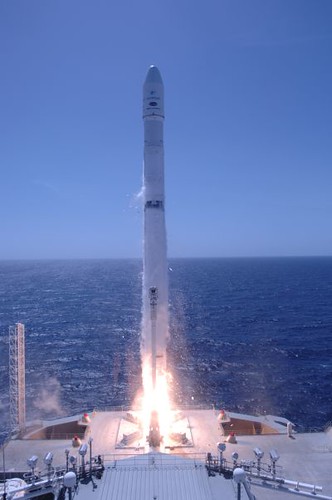Thrust Vector Control System
Tuesday, February 19th, 2013
Ya, the gorilla in the room is poor quality, according to SpaceFlightNow.com…
In a statement issued Feb. 6, Vitaly Lopota, general designer and president of RSC Energia, vowed investigators would find the cause of the Feb. 1 launch mishap and resume launching satellites.
“In conjunction with the participants of this program and various interested parties from the business community, we are in the process of creating a strategy that will ensure the long-term viability of the Sea Launch system as well as provide for evolutionary improvements to its performance,” Lopota said in a statement. “We remain confident that the Sea Launch program will continue to remain a key launch service provider to the world’s spacecraft operator community for years to come.”
The Feb. 1 failure marked the fourth problematic launch in 35 flights from Sea Launch’s ocean pad, and it was the first anomaly since the company emerged from Chapter 11 bankruptcy proceedings.
“I urge all current and potential customers of Sea Launch to be patient, recognizing the strategic importance of launch vehicle diversity to their own business,” Lopota said. “We can assure you that Sea Launch will continue to launch our customer’s spacecraft on schedule, reliably and with a high level of injection accuracy.”
The Russian and Ukrainian governments assumed control of the investigation into the Feb. 1 launch failure. Engineers are focusing their inquiry on the thrust vector control system of the Zenit rocket’s RD-171 first stage engine.
The thrust vector control system pivots the engine in flight, directing its thrust to help steer the rocket through the atmosphere on the proper trajectory.
The steering system failed soon after launch, causing the rocket to veer from its planned flight path.
The Zenit rocket’s flight computer detected the booster exceeded a programmed roll limit and initiated an engine shutdown sequence, which is designed to safely terminate the flight in the event of a problem.
The RD-171 engine, built in Russia by NPO Energomash, switched off about 20 seconds after liftoff, and the rocket crashed into the Pacific a few miles from the launch platform.
